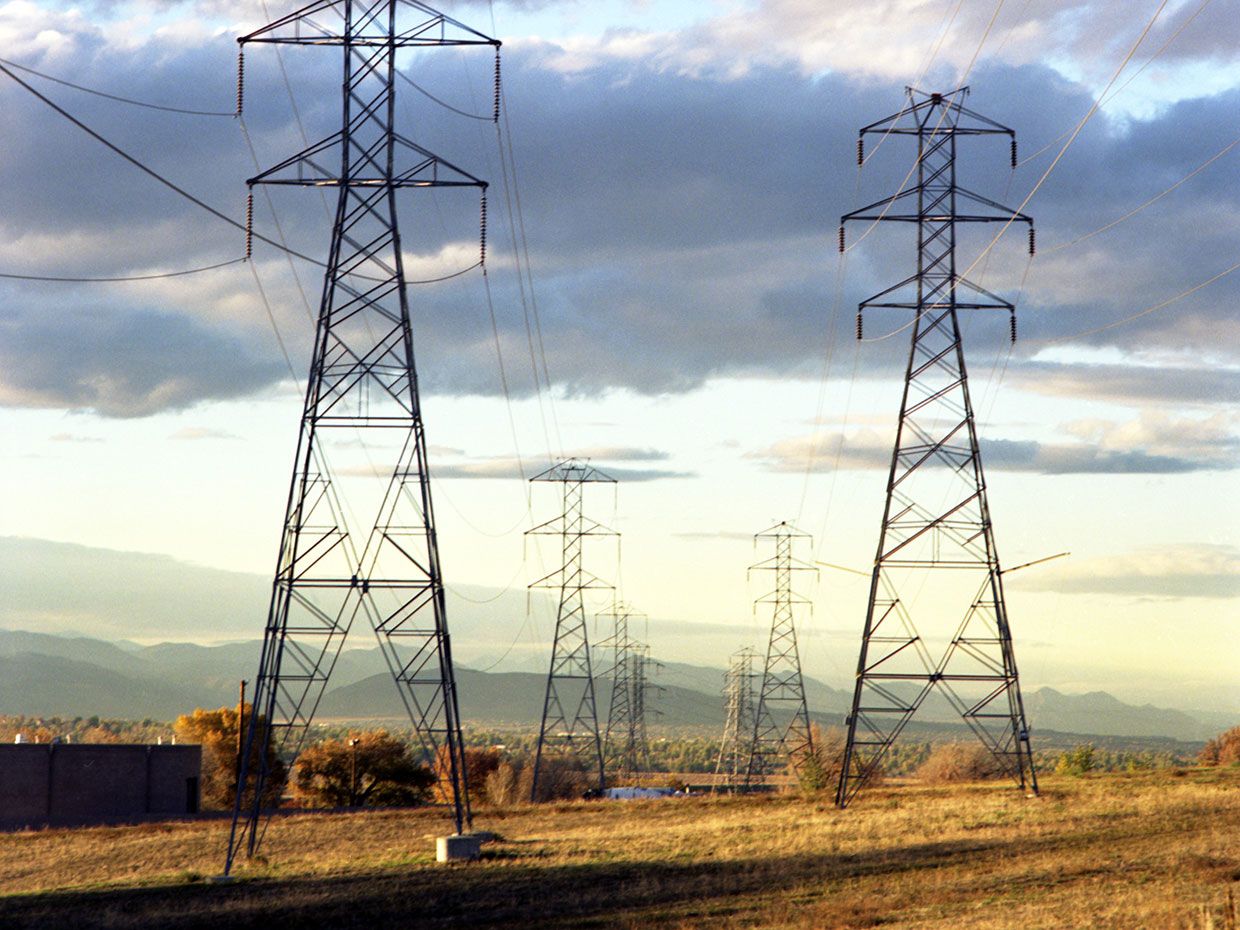
IEEE Spectrum By David C. Wagman | 08 Aug 2018
Fortifying connections between three disparate grids could make renewable energy more widely available
The U.S. electrical grid is really made up of three largely separate grids with puny transmission connections at the seams. These seams cross sparsely populated rangeland in the middle of the country.
The Eastern Interconnection serves much of the United States east of the Great Plains. The Western Interconnection covers residents from the Great Plains to the Rockies and up and down the West Coast. And most of Texas has a grid of its own. Policymakers there shun ties with the other two grids in order to keep federal electric power regulation out of the Lone Star State.
Almost like safety pins holding together an elaborate wedding dress, no more than 1,300 megawatts of transmission capacity at a total of seven locations stitch all of this together.
The seams have long interested electric transmission and generation planners. Nearly 100 years ago, a Chicago newspaper trumpeted the value of a truly interconnected grid. Other studies have reached similar conclusions, and the most recent effort is no different.
Led by researchers at the U.S. Energy Department’s National Renewable Energy Laboratory, a new seam study finds considerable economic and engineering value in fortifying these connections to better distribute power resources around the country.
The study results [PDF] were presented in July at the TransGrid-X Symposium at Iowa State University in Ames, Iowa.
The timing is right for this latest study to consider how to bridge the seams more robustly, says Aaron Bloom, who led the NREL research effort.
For one thing, equipment at the connection points is 30 to 40 years old, and nearing the end of its useful life. High-voltage direct current (HVDC) technology is readily available and increasingly affordable, and could replace the old equipment to make long-distance electric power transfers between the eastern and western United States possible.
The rapid growth of wind and solar generation has also kindled talk about using those resources more effectively. Ideas put forward in the 1920s cited abundant hydroelectric resources in the West and coal resources in the East as reasons for building a robust east-west grid to move electricity produced from those resources to growing markets.
Bloom and colleagues from Iowa State, Pacific Northwest National Labs, the Southwest Power Pool, the Midcontinent Independent System Operator, and the Western Area Power Administration built complex simulations and leveraged hefty analytical capacity to help them model scenarios in which solar power from the desert Southwest helps to meet peak electricity demand in the Northeast and then supports similar demand peaks a few hours later in the West.
Likewise, abundant fossil generation resources in the East could find broader markets across the mid-continent seam in the West.
The study reaches four main conclusions. First, it finds that “substantial value” exists in increasing the transfer capability between the grids. Maintaining the status quo of puny connections is the least desirable outcome.
Second, cross-seam transmission has a substantial impact on the location, size, and type of wind and solar that could be developed in each region. Third, cross-seam transmission enables substantial energy and operating reserve sharing on a daily as well as on a seasonal basis. Fourth, there may be additional benefits as well as costs, including enhanced frequency response and resilience to extreme events.
“Building national-scale transmission makes sense,” Bloom says. That holds true, he says, even under a scenario that models a carbon tax that grows to a price of US $40 per metric ton of CO2 by 2038.
The need to better distribute renewable energy resources across the country isn’t merely a research question. Bloomberg recently reported on the growing number of times that wholesale power prices have fallen below zero. That kind of negative pricing can happen when too much wind generation occurs at times of low demand. The news agency says that since the start of the year through mid-July, California had recorded 76 hours of negative prices, New England 66 hours, and Texas 49 hours.
Negative prices mean that other generating resources need to curtail output. Neither coal nor nuclear power plants are able to “cycle” very effectively. And although gas-fired power plants can cycle a bit more easily, big pieces of equipment known as heat recovery steam generators can suffer as a result of swings in pressure and temperature.
The problem of negative pricing isn’t isolated to the United States. Germany has racked up almost 200 hours of negative pricing this year, Bloomberg says.
More robust transmission ties could make low-cost and abundant renewable resources more widely available, easing the consequences of negative prices in specific locations.
While the NREL study is the latest in a nearly century-long debate about building more robust seam connections, China’s centrally planned economy is moving ahead with plans to spend more than $300 billion to improve its power grid infrastructure by 2020.
The goal is to upgrade the country’s long-haul power transmission capacity to reduce coal consumption along the eastern coast and open markets in the far west, where electricity demand is lower. Already completed are long-distance ultrahigh-voltage power lines that tie thermal power and hydroelectric stations in the west to population centers like Shanghai in the east.
Altogether, China aims to increase the total length of its high-voltage transmission lines to more than 1.01 million kilometers by the end of 2020, more than double 2014 levels.
Public policy is a big factor in the United States, Bloom says, though the NREL study focused on issues related to the science and technology. Transmission siting in the United States is notoriously difficult, as proposed routes often require agreements with hundreds of land owners as well as approval by local, state, and federal agencies.
Bloom says that designs that use HVDC lines could cut through some of the red tape, as the transmission lines could be buried along existing railroad rights-of-way.
The study findings will be written up for possible publication in the next several months in a professional journal. And Bloom says the researchers plan to study more possible scenarios, including the impact of adding no new transmission, the possible benefit of synchronizing the disparate grids, and the impact of improving ties with Canada and Mexico.
Those studies will move forward even as the first century of talk about grid seams draws to a close.


